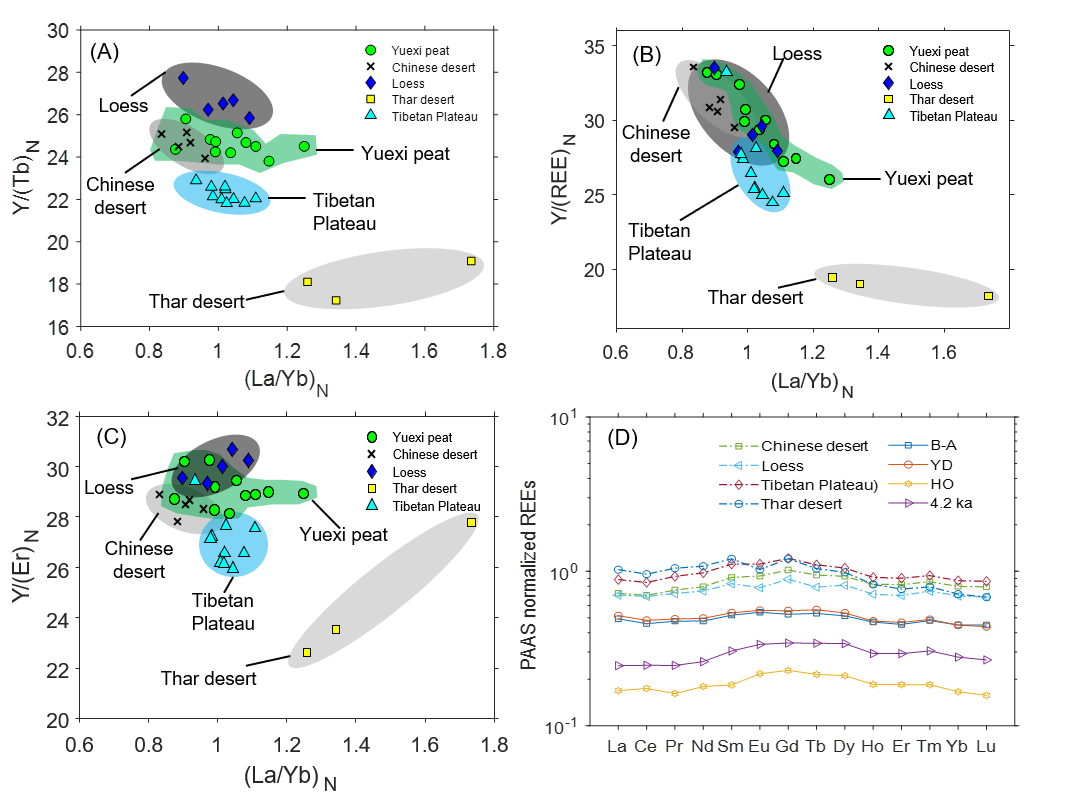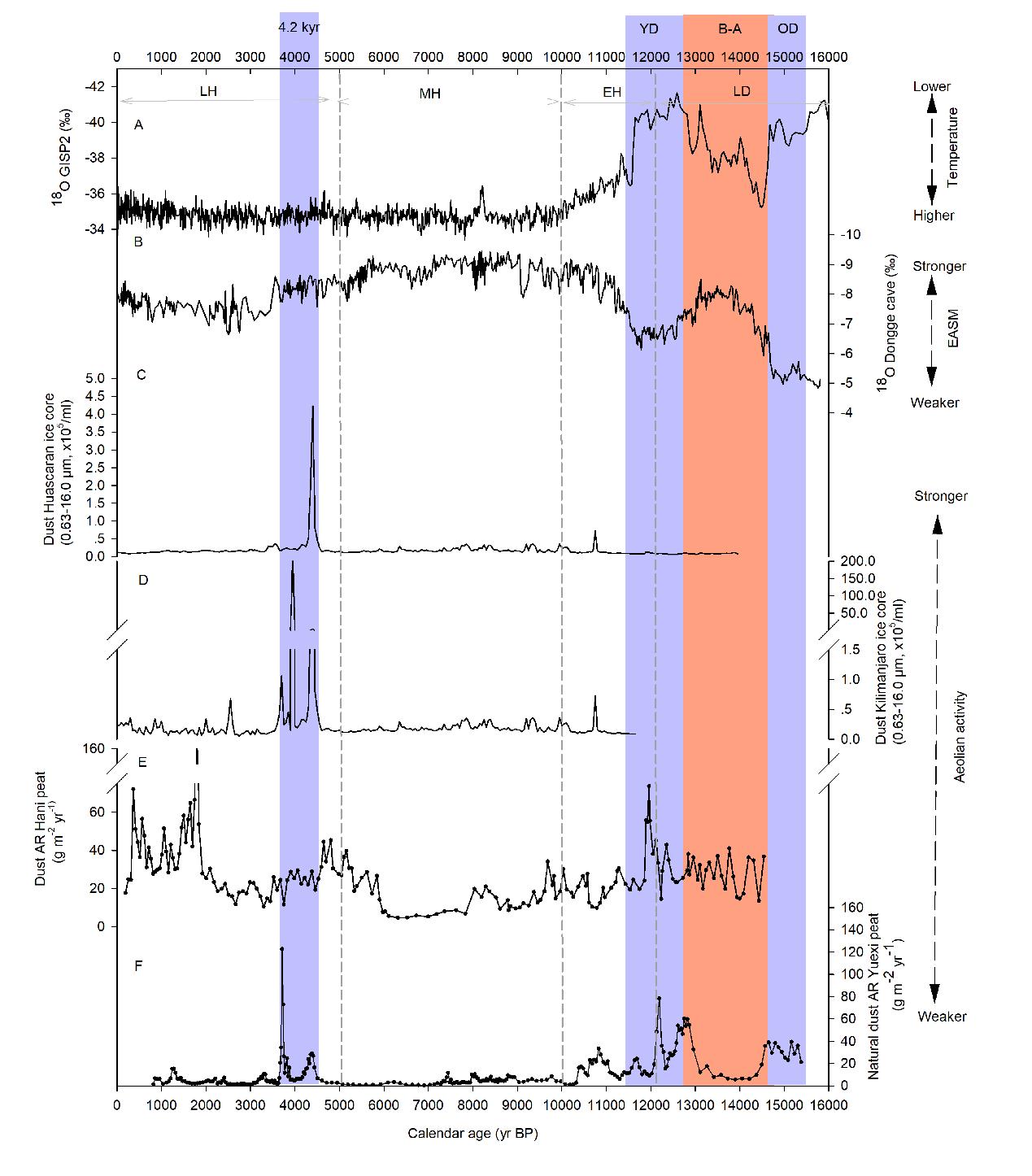Atmospheric mineral dust from diverse natural sources plays a multifaceted role in the Earth-climate system. Dust fluxes and sources will lay a foundation for understanding long-term scale atmospheric circulation and how the terrestrial ecosystem reacts to climate changes.
The mechanism of abrupt climate changes in east Asia since the last deglaciation when human activities frequently emerged remains poorly explored due to the lacking of high-resolution geological archives.
A research group led by Prof. HONG Bing from the Institute of Geochemistry of the Chinese Academy of Sciences (IGCAS) and CAS Center for Excellence in Quaternary Science and Global Change and their collaborators studied the dust provenance and fluxes of southwest China since the last deglaciation to address this problem.
The researchers analyzed major elements and trace elements including rare-earth elements (REEs) measurements in a peat core taken from the Yuexi peatland, an ombrotrophic peatland in southwest China.
"We applied the average REEs and Y contents of the whole Yuexi peat core in the source end-members mixing model, and found that the dominant dust sources to the Yuexi peatland were the deserts in northwest China, the Loess Plateau, and Tibetan Plateau, with the contributions of 45%, 22%, and 33%, respectively," said Prof. HONG.
The comparison with global climatic records suggested a teleconnection between the climate change in southwest China and North Atlantic cooling events, which implies that the abrupt variation in dust fluxes was linked with Asian monsoons variations. The results also revealed that increased human activities significantly contributed to the dust fluxes during the late Holocene.
The study was published in Quaternary Science Reviews on Dec. 14. It was supported by the Strategic Priority Research Program of the Chinese Academy of Sciences and the National Nature Science Foundation of China.
 |
| Figure 1. End-members characteristics of the Yuexi peat and samples from the surrounding area and their REEs patterns.(Image by IGCAS) |
 |
| Figure 2. Comparison between the Yuexi dust record with other climatic and dust records.(Image by IGCAS) |
Contacts:
PENG Haijun; HONG Bing
Institute of Geochemistry, Chinese Academy of Sciences
Email: penghaijun@mail.gyig.ac.cn; hongbing@mail.gyig.ac.cn
(By Prof. HONG Bing’s group)